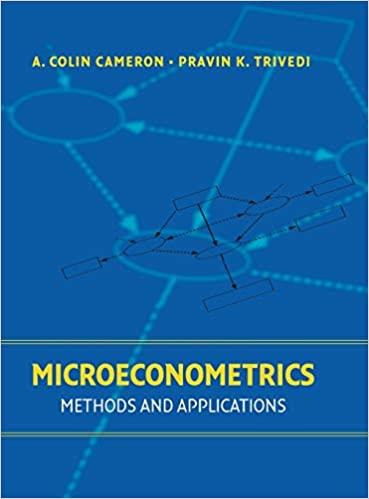Consider the exponential-gamma mixture. This model is a special case of a MPH model. The survivor function,
Question:
Consider the exponential-gamma mixture. This model is a special case of a MPH model. The survivor function, conditional on a multiplicative heterogeneity factor \(v\), for the exponential model is \(S(t \mid v)=\exp (-\mu t v), \lambda>0\). The unconditional survivor function is given by the average survivor function. Averaging is across the heterogeneous population using \(g(v)\), the density of \(v\), as the weighting function, so \(S(t)=\int_{0}^{\infty} S(t \mid v) g(v) d v\). Assume that \(v\) is (two-parameter) gamma distributed with \(g(v)=\delta^{k} v^{k-1} \exp (-\delta v) / \Gamma(k)\).
(a) Show that, given gamma heterogeneity, \(S(t)=(1+\mu t / \delta)^{-k}\).
(b) Derive expressions for the unconditional duration density function \(f(t)\) and the unconditional hazard function \(\lambda(t)\). These general expressions can be specialized by setting the mean of \(v\) at 1 ; that is, set \(k=\delta\), which leads to the exponential-gamma mixture. Compare the mean and variance properties of this mixture distribution with those of the original exponential distribution.
(c) Suppose that the random variable \(v\) has a two-point distribution such that with probability \(\pi\) it takes the value \(u_{1}\) and with probability \((1-\pi)\) it takes the value \(v_{2}\). What are the implications of this assumption for the specification of the unconditional survivor function? Explain your answer.
Step by Step Answer:

Microeconometrics Methods And Applications
ISBN: 9780521848053
1st Edition
Authors: A.Colin Cameron, Pravin K. Trivedi





